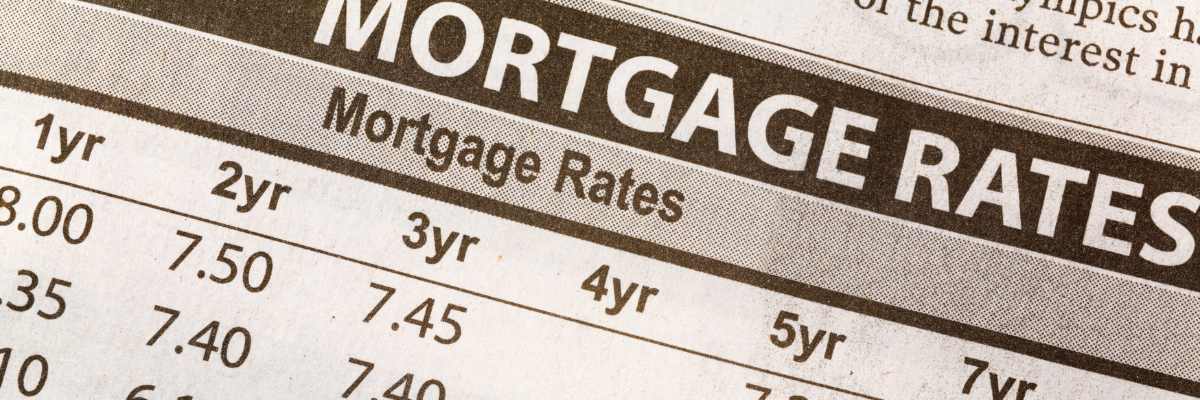
Last October 27, 2022, the nation’s mortgage rate peaked at 7.08 percent, garnering the attention of countless media companies, such as Forbes and Times.
When this news broke, many homebuyers postponed their plans to purchase a house and held onto their money until the mortgage rate stabilized at a much lower rate.
Despite this sudden influx of mortgage rates, experts believe today is still a great time to invest in real estate as we’ll discuss more in this blog post. Below, we’ll discuss the factors influencing the rise and fall of mortgage rates, what it means to different homeowners, buyers, and sellers, and a quick yearly look back at historical mortgage rates.
By definition, mortgage rates are the interest charged to borrowers on their mortgages. Homebuyers use this as their indicator of whether to proceed with their purchase or not. This rate is based on a few factors, namely:
Different parties included in the real estate purchasing process are affected by the mortgage rate differently.
For homeowners, a drop in mortgage rates means they can refinance their homes and thereby lower their monthly payments. This decline also allows them to cash out equity from their home or consolidate debts with the proceeds.
For buyers, a lower mortgage rate generally means they have to pay a lower amount. This saves them money and allows them to purchase their home with a smaller down payment. However, a lower mortgage rate also means that mortgage lenders could be more stringent regarding their loan requirements, such as credit score and debt-to-income ratio.
For sellers, a lower mortgage rate is a more competitive rate, which can attract more buyers. This can be beneficial in a market where sellers and buyers compete for the same properties.
Yes and no. In hindsight, seven percent is a sharp increase from January 13’s 3.45 percent rate. However, it’s essential to look at the finer details and understand the movement of the mortgage market before withdrawing your investments.
Historically, mortgage rates are severely volatile — they ebb and flow. Before the mortgage rate hit 7.08 percent, we entered October 2022 with a 6.66 percent rate. If we look at previous figures, this is a commonly observed pattern during these times. The mortgage rate for October 28th, 2021 was 3.14 percent, yet we entered that month with a 2.99 percent rate.
Furthermore, according to the 30-year fixed-rate mortgage average, our seven percent rate is still relatively low compared to the 1980’s all-time high of 18.77 percent. Although homes were cheaper back then, it’s undeniable that the soaring mortgage rate adversely affected the finances of countless homeowners.
On the bright side, our current mortgage rates are starting to decline. As of this writing, our current mortgage rate is at 6.31 percent, with further declivity expected.
Studying the mortgage rate’s behavior in the past can help you gain insight into the market. Here’s a quick look at what we’ve observed at the start of each month of this year:
Here’s a 10-year review of mortgage rates for October:
See a fuller picture of mortgage rates over the past 10 years: Historical Mortgage Rates: Averages and Trends from the 1970s to 2022
It’s normal to be concerned about the increase in mortgage rates. It only means that you know your money’s value and want to play the game right. A little bit of caution can go a long way.
However, it’s essential to understand the market before jumping to conclusions and withdrawing your investments. As we’ve mentioned earlier, mortgage rates are cyclical and generally lower by the end of the year. Putting everything into perspective and looking at mortgage rates in their historical context, it’s clear that now is far from the worst time to buy. Mortgage rates are much lower than they were at times in the past.
Also, remember that real estate remains a long-term investment, and any short-term fluctuations should not deter you from your purchase as it could be beneficial in the long run.
Understanding the movement of mortgage rates can help you manage your purchases correctly and get the most out of them. Keeping yourself updated with the current mortgage rate gives you an advantage over other buyers, as you can make more informed decisions about investing in real estate.
The seven percent increase should capture your attention, but it’s equally important to conduct proper research and prevent your fear from driving your decisions. With a comprehensive understanding of the mortgage market and current trends, you can make the best decisions for your investments.
Now is definitely not the worst time to buy so what are you waiting for?
Reach out to an ASTAR loan officer today! One of our All-Star Mortgage Experts will help you understand your mortgage options. Email info@astarteam.com or call 888-ASTAR-11 (888-278-2711) to start the loan application process.